Meet the designers using revolutionary new eco materials
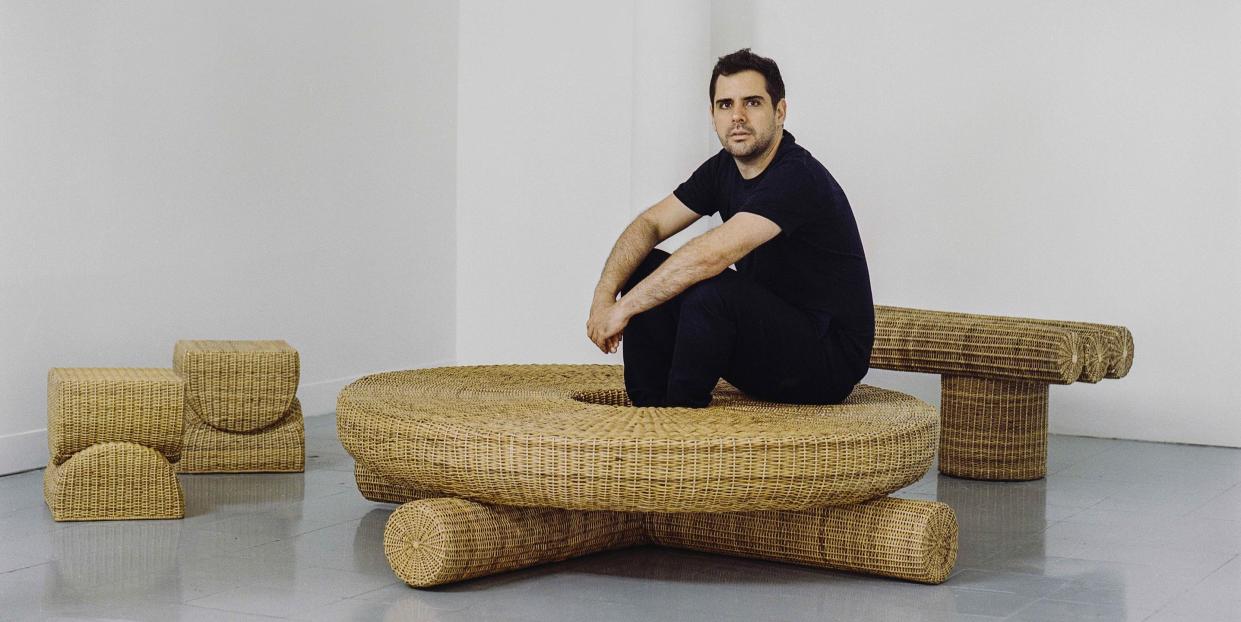
With our environmental impact rightfully under increasing scrutiny, designers are using creativity and ingenuity to find new solutions. These established names and upstart innovators give us optimism for the future, with projects that include everything from using microalgae in generating power to turning paper pulp into a marble alternative and even creating fully-compostable seating. It’s conscious design that doesn’t compromise on aesthetics.
Fango
With deforestation contributing to climate change and displacing indigenous communities, especially within the Amazon region, Colombian designer Francisco Jaramillo (pictured above) is keen to raise awareness around the urgent need for change. In his recent collection, ‘Ibuju’, the Fango founder works with a local weaving community in his home country to create a furniture collection using Yaré – a fast-growing, natural fibre that can be found attached to trees and has been extracted and used in a variety of craft applications for generations. The pieces spotlight the relationship between the artisans, the material and their respect for it, with Jaramillo using his design-led aesthetic to connect it to the contemporary furniture world. @fangostudio
Prowl Studio
Launched at Milan Design Week 2023 in an installation titled ‘Expect Death’, the ‘Peel’ chair by Prowl Studio (Baillie Mishler and Lauryn Menard, above from left) was developed in collaboration with M4 Factory and is made from a hemp-based bioplastic, which combines industrial hemp-processing waste by-products with biopolymers.
With the frame taking up to six months to break down in an industrial-composting facility, the hemp foam cushion, which is upholstered in hemp bio-leather, decomposes as fast as an orange peel and, claims the studio, can be composted at home – a convenient and responsible option if a new colour or upgrade is desired. When discussing the Californian studio’s approach to design, creative director Menard comments, ‘we say that we begin with the end to fully understand what the next life of each material, product or space we design could become.’ prowlstud.io
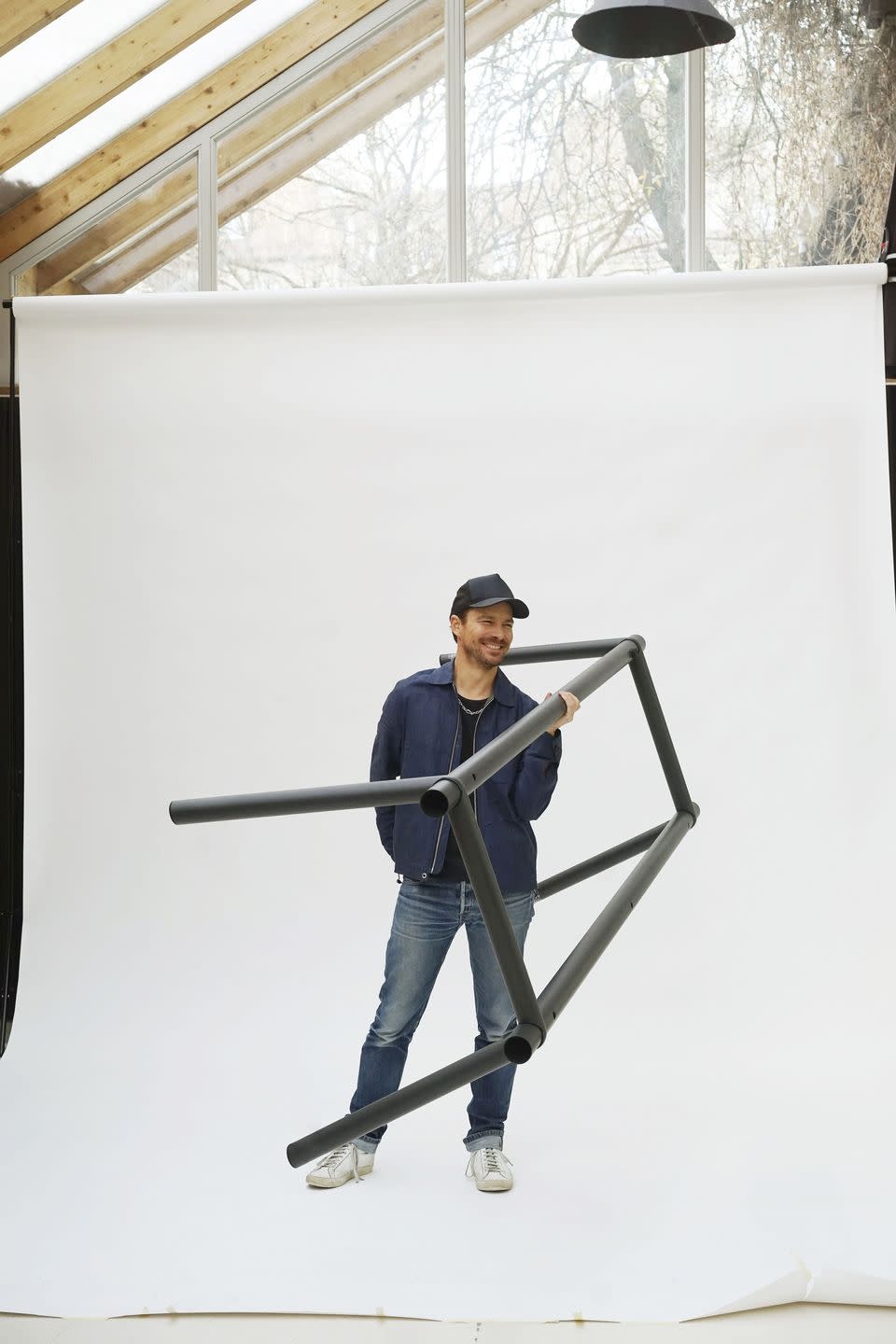
Stefan Diez
Inspired by Japanese bamboo furniture, the German designer Stefan Diez turned to aluminium, a fully recyclable material, when creating the ‘Boa’ table for Danish lifestyle brand Hay. He collaborated with the Norwegian aluminium manufacturer Hydro to produce the table base from 75 per cent recycled, post-consumer scrap, and incorporated a unique folding technique that mimics traditional bamboo artistry.
Thanks to its lightweight quality, flat-packed structure and the added benefit of the production facility being fuelled by hydropower, the table has been designed to minimise its carbon footprint throughout the entire manufacturing and delivery process. The tabletop is available in a variety of sizes, finishes and materials or can be sourced locally, giving buyers the chance to create a customised design that suits their personal style and environment. hay.dk; diezoffice.com
Alted Materials
With half of the building industry’s CO2 emissions coming from the materials used, design studio Alted Materials is passionate about disrupting the sector by introducing architectural products that are manufactured around the principles of a circular economy. Its first collection, ‘Alted H01’, is a series of decorative wall panels made from cellulose waste from the paper industry.
The material, titled ‘Honext’, has been formed into three patterned designs that are all waste-based, plant-based, non-toxic and recyclable. ‘Designing for circularity is not an option any more,’ says designer and founder Berta Julià Sala. ‘It is the only way forward, and I believe that most designers and companies will soon come to realise that.’ And, with a take-back scheme in place, the panels can be returned at the end of their lifespan and recycled directly back into the same production loop. altedmaterials.com
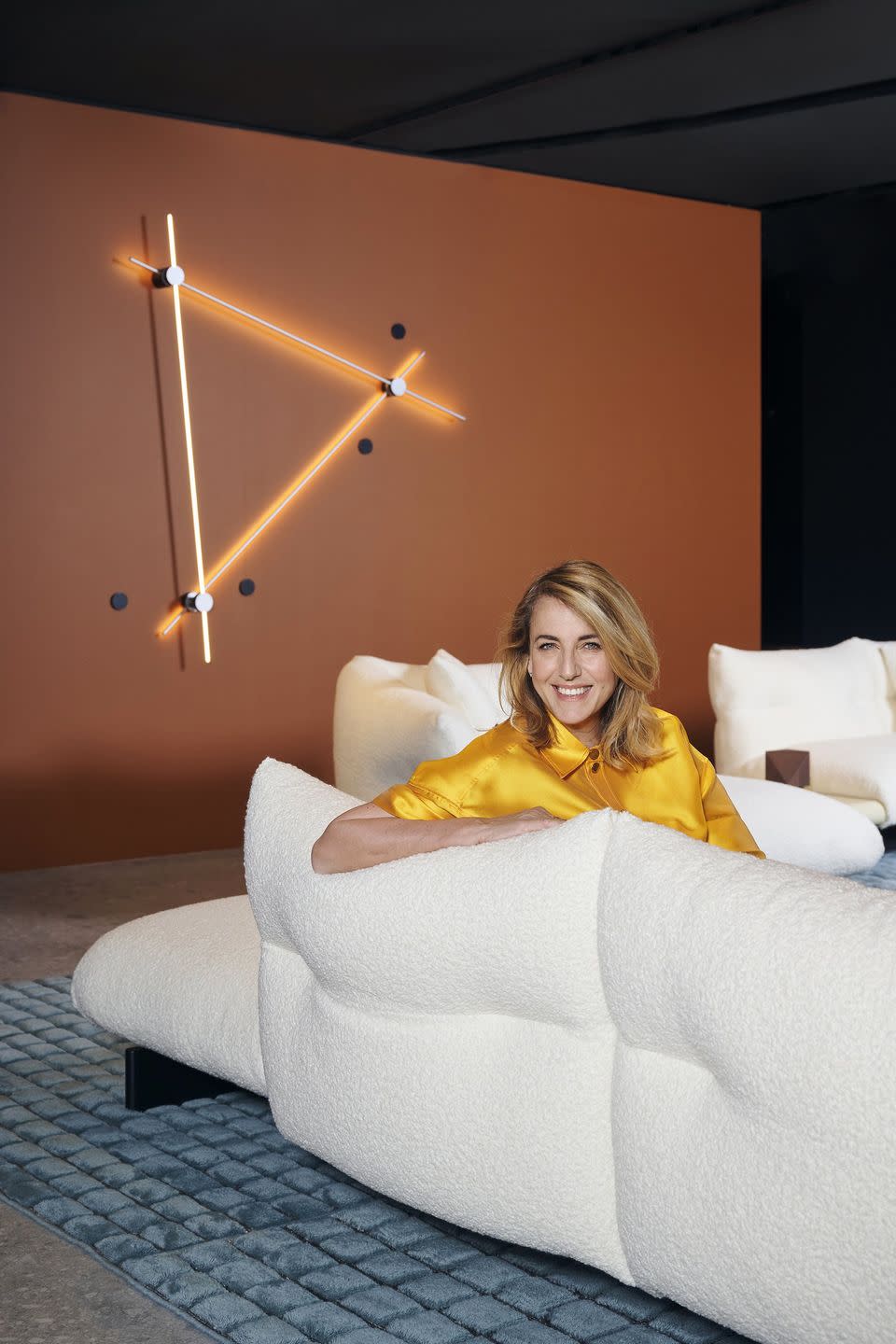
Patricia Urquiola
Renowned designer and Cassina art director Patricia Urquiola’s ‘Moncloud’ sofa is centred on sustainable values, and we’re not just talking about its use of recycled materials. The construction of this sofa is just as thoughtful. Its cloud-like curvaceous form is made using a metal frame wrapped in and sculpted using recycled PET wadding, while the use of polyurethane in the padding has been reduced thanks to the inclusion of Circularrefoam, a polyurethane foam made with a percentage of recycled polyols.
‘The sofa is a result of extensive research,’ states Urquiola, ‘and it addresses important issues with a vision that never looks back.’ Plus, with no glued components, the sofa can be completely disassembled at the end of its life, making it easier to recycle and recover all of the materials individually. cassina.com; patriciaurquiola.com
Federico Peri
As the extraction of non-renewable resources like marble requires energy-intensive manufacturing processes, an alternative is imperative, especially one to match the stone’s luxury aesthetic. Bentley’s recent collaboration with Italian designer Federico Peri is proof that a solution exists. Peri took Bentley’s innovative paper-pulp surface material Paper Factor (developed by architect and art director Riccardo Cavaciocchi) and applied it to tables designed as part of the brand’s 2023 collection.
Crafted by hand in a highly skilled process, the finish is reminiscent of marble, with organic colouring and intricate veining. With waste and water usage reduced to a minimum throughout the pieces’ production, this is part of a drive towards sustainability from Bentley, which also states that the material is extremely durable when treated with a protective coating. bentleymotors.com; federicoperi.com
Fengfan Yang
A forward-thinking project by the Chinese designer, ‘Light on Lives’ is a lamp that doesn’t require external sources of energy to function. Harnessing the power of microalgae, which sits in water within the base of the lamp, the visionary creative is exploring plant-powered electricity generation. While microalgae doesn’t produce much power, it is enough for
this to function as a night light, if the water is changed regularly.
‘Many applications for microalgae can still seem a bit far away from life,’ Yang explains. ‘One of my aims is to present this to people in a gentle way by combining existing technology with common everyday products, so that people will realise that plant power-generation is a close reality.’ Interdisciplinary collaboration is the key to expanding the applications for this type of plant power believes Yang, who is positive about the future beyond his project. fengfanyang.com
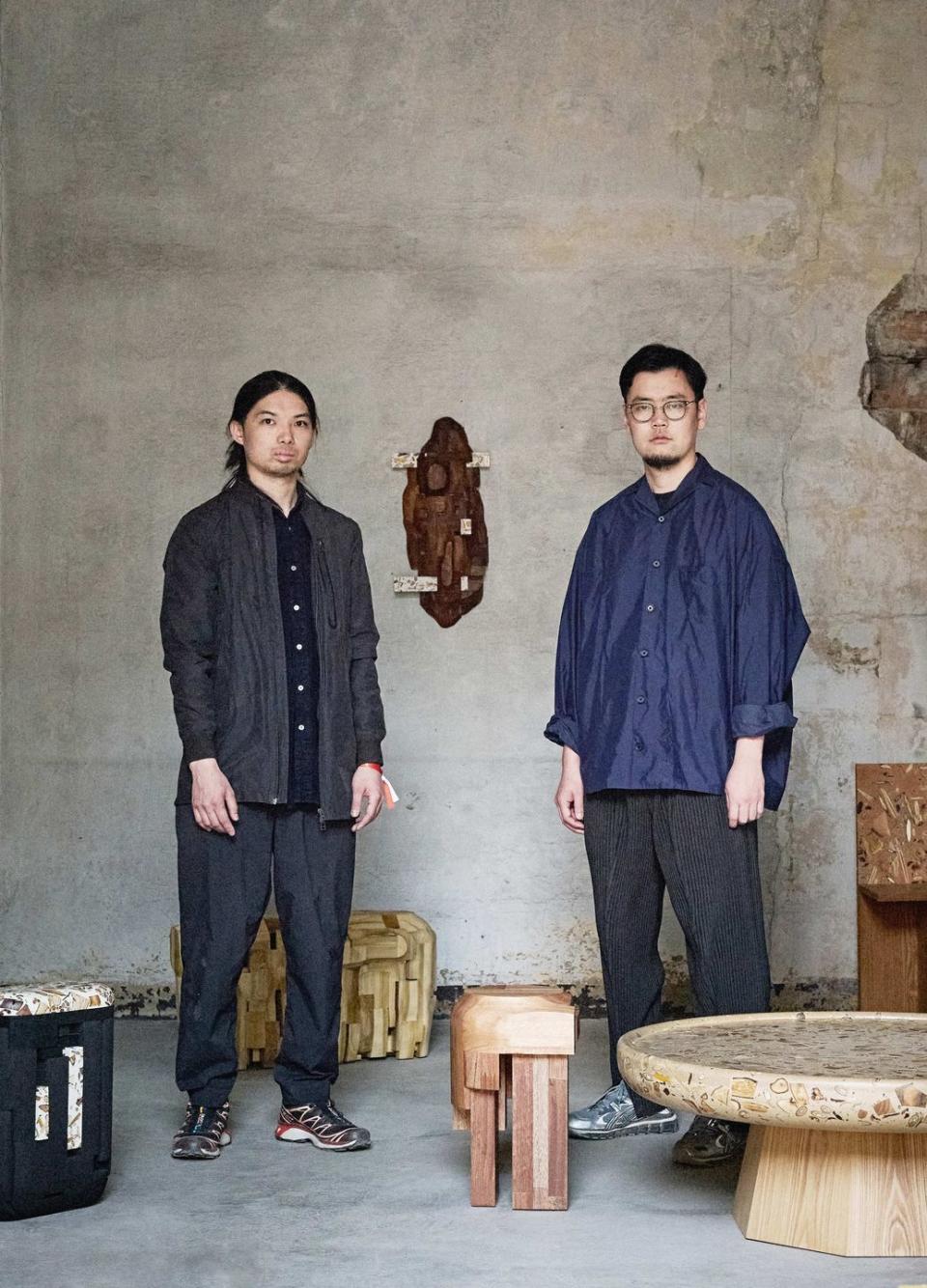
Yuma Kano
After visiting the Hida region of Japan, renowned for its expanse of forest, Japanese designer Yuma Kano (pictured on the right, with fellow designer Sho Ota) states how he found beauty in the small branches, leaves and nuts that are often forgotten underfoot. Seeking to incorporate this natural resource within his work, he set out to create a material named ‘ForestBank’, which combines this organic waste with resin. Kano’s resourceful approach highlights the intricate beauty of these small forest finds, which vary in appearance and size. He notes the pieces can also be salvaged from pruning waste streams or offcuts found in woodworking studios. Each design is unique, thanks to its organic characteristics, and can be applied to forms such as tabletops and worksurfaces. yumakano.com
Estudio Rain
Derived from a plant-based castor oil resin developed by the University of São Paulo, the ‘Rícino’ lighting collection’s translucent amber fixtures offer a striking and ecological alternative to more widely used petroleum-based resin products. For the Brazilian studio, founded by Mariana Ramos and Ricardo Innecco, research for this project began way back in 2018 and, discussing the extensive material exploration they carried out, Ramos states how the process is never linear.
‘It is important to keep a high level of curiosity, interest and persistence to get to the desired outcome,’ she says. ‘We will be developing the project to work with the same material to create different colours and textures.’ With it being cold-pressed and manufactured in a process free from water consumption, this inventive material is sure to become more popular across the design world. estudiorain.com
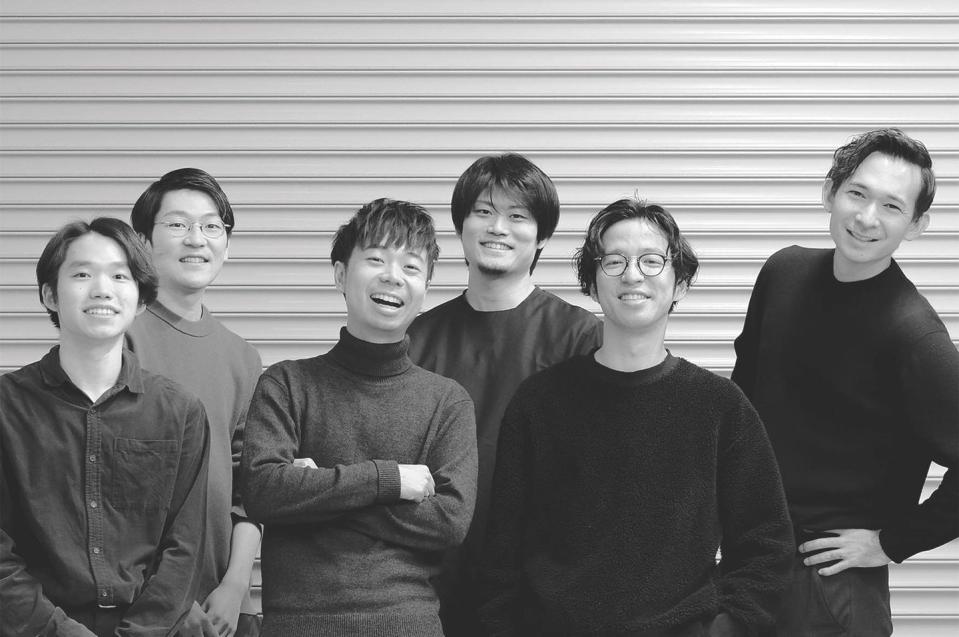
Honoka Design lab
Comprising a group of voluntary Japanese designers, Honoka Design Lab recently exhibited a series of furniture titled the ‘Tatami Refab Project’. This latest collection is made using material from discarded Tatami mats, which is combined with bioplastic to create a green resin-like substance. The mats, which are made from Igusa grass and have been used in Japanese interiors for centuries to improve humidity and odour, provided the starting point for the project.
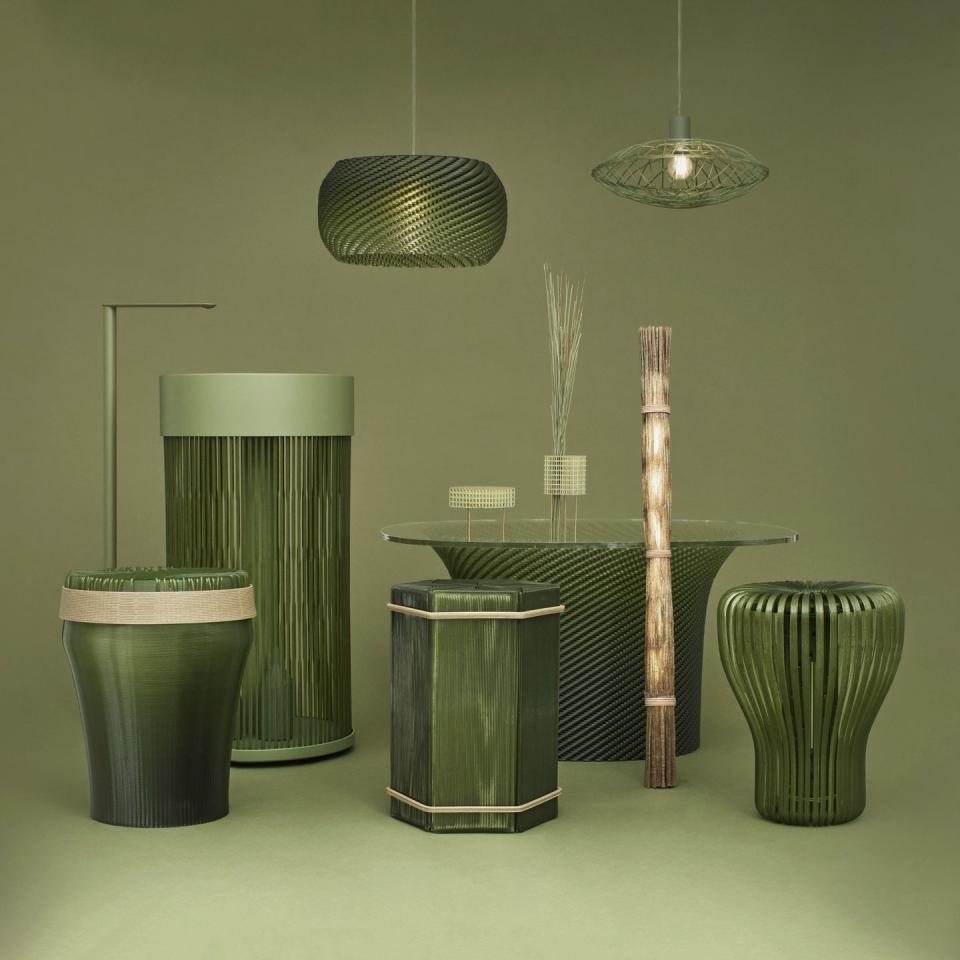
In transforming the material to these striking furniture and lighting designs – with the assistance of 3D-printing experts ExtraBold Inc – the team hope to allow the beauty of Tatami to live on by appealing to younger generations of Japanese homeowners who have been increasingly influenced by Western design trends. honoka-lab.jp

 Yahoo News
Yahoo News 
